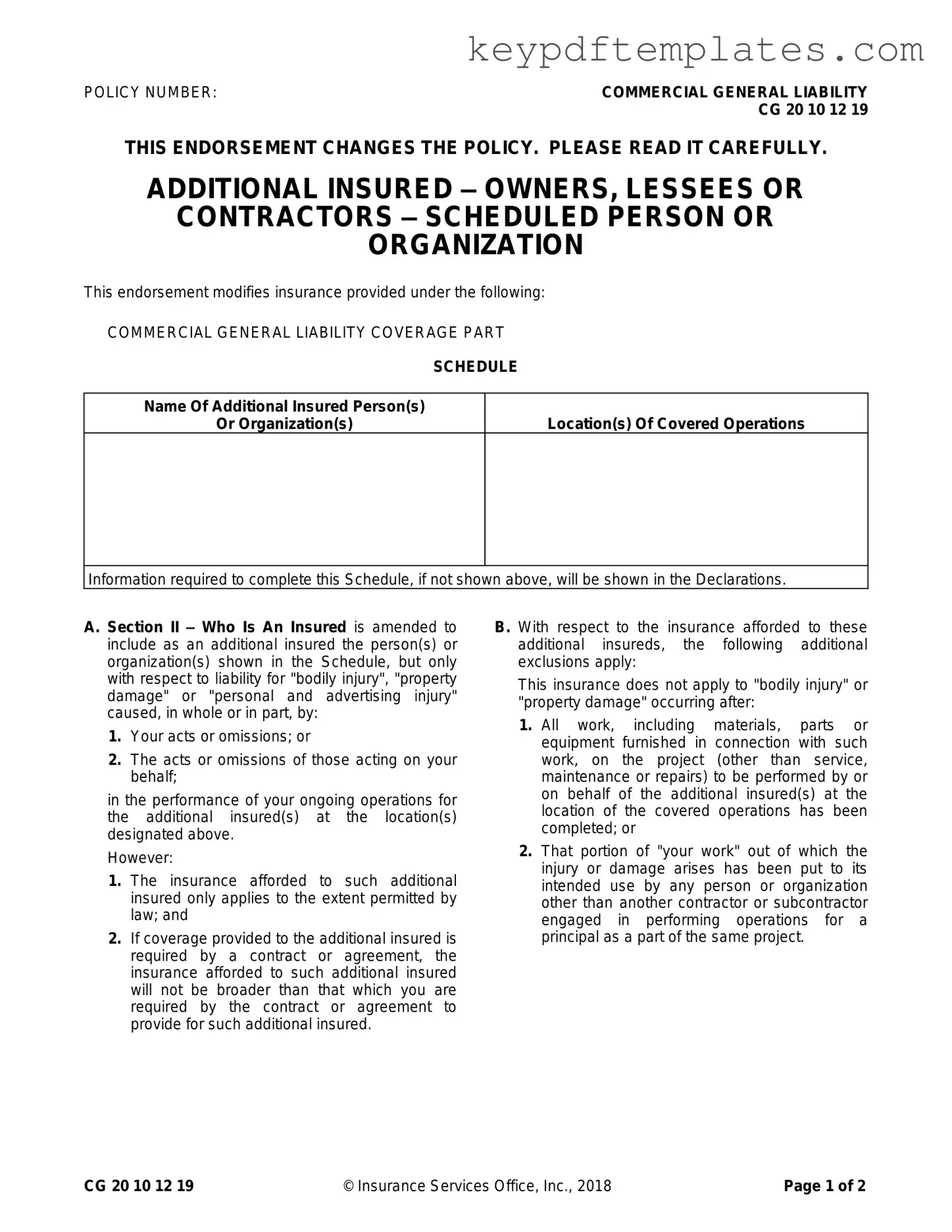Get Cg 20 10 07 04 Liability Endorsement Form
The CG 20 10 07 04 Liability Endorsement form is a crucial document that modifies the coverage provided under a Commercial General Liability policy. It specifically adds additional insured parties, such as owners, lessees, or contractors, to the policy, ensuring they are protected against certain liabilities arising from your operations. Understanding this endorsement is essential for anyone involved in contractual agreements that require shared liability coverage.
Modify Document Online
